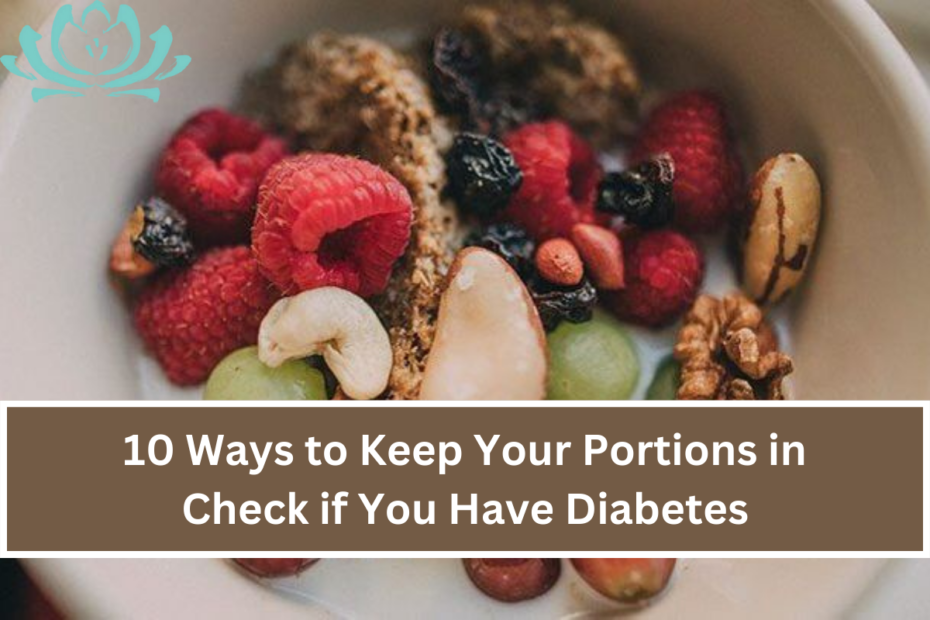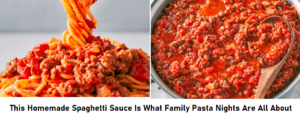10 Ways to Keep Your Portions in Check if You Have Diabetes:- Everyone should watch their diet. The more than 37 million Americans with diabetes need it most an Academy of Nutrition and Dietetics spokesman and wellness dietitian at Baptist Health South Florida in Miami.
“Everyone needs to pay attention to portion sizes,” We now observe portions and think they’re serving amounts because portion sizes have twisted.
That portion distortion can lead to overeating and weight gain, which are especially dangerous for diabetics because the American Diabetes Association reports that added pounds can increase the risk of heart disease, stroke, high blood pressure, unhealthy cholesterol, and high blood glucose). A study found that weight loss and maintenance improve insulin sensitivity.
Here are 10 ways to control your portions and lower your diabetes risk.
10 Ways to Keep Your Portions in Check if You Have Diabetes
1. Weigh and measure food to determine intake.
- Many people, diabetic or not, struggle to estimate meal sizes. Food can be weighed and measured. “We can’t be healthy if we eat everything put in front of us, and weighing and measuring teaches us proper portion sizes,” Virginia health and wellness consultant Jill Diabetics can eat 30–45 g of carbs every meal for women and 45–60 g for males.
- How do you know you’re eating enough? she shows patients average meal sizes and “counting carbs” equivalents when counselling them. One (average) piece of bread, one-third cup of cooked rice, one-half cup of cooked legumes like lentils, black beans, or garbanzo beans, and one tennis-ball-size apple all contain 15 g of carbohydrates.
- Patients to measure items at home using measuring cups and spoons to observe common portion amounts on their plates. She advises using a scale if you have type 1 or type 2 diabetes and are taking insulin. Some scales count carbohydrates.
2. Use Visual Aids to Estimate Portions When Dining Out.
- When eating out, recommends comparing amounts to familiar things. For example, 1 cup is about the size of a baseball, and one serving of meat, about 3 ounces (oz), should be a deck of cards. About the size of a tennis ball, a ½ cup is equivalent to 1 oz of cooked grains like pasta, rice, or oats.
3. Read Food Labels for Calories, Serving Sizes, Carbs, and Sodium.
- Check food labels for portion sizes. Start with the serving size while reading food labels.Current food labels vary in servings.
- Therefore, if the serving size is many, you must calculate your intake. Information must be doubled if you eat 10 crackers instead of 5. 100 calories become 200, 250 mg salt becomes 500 mg, etc.
- Type 2 diabetics should limit saturated fat since they are more likely to develop heart disease.
- “I teach people to look at saturated fat percentages,” giving them 5–20% allows them know if the food is ‘high saturated fat’ or ‘low saturated fat.’ Product with 5% is better.”
- Monitoring sodium intake is important. The American Heart Association advises most persons to limit their daily intake to 2,300 mg and aim for 1,500 mg, especially diabetics.
- Dietary salt reduction lowers blood pressure for many. Lowering blood pressure minimises diabetic consequences including heart attack and stroke.
- People with diabetes must consider “total carbs,” “This category includes sugar,” Diabetes patients may solely focus on sugar, but that’s insufficient.
- Bread may have 15 g carbs and 1 g sugar. If you simply saw sugar, you might eat more thinking you’re not changing your blood sugar.
4. Avoid Overdoing It at All-You-Can-Eat Buffets.
- All-you-can-eat buffets are dangerous for everyone, but they’re especially dangerous for people with type 1 or 2 diabetes.
- “They typically lead to overeating,” which can raise blood sugar and cause harmful weight gain in diabetics.
- Here are her buffet portion control suggestions.
- Starving yourself before the buffet will make you overeat.
- Check out the buffet before serving. You might choose healthier options.
- Eat tiny amounts.
- Watch starches. Diabetics should pay greater attention because starches directly affect blood sugar.
- Be careful with grains like bread, rice, and pasta and “starchy” vegetables like potatoes, maize, peas, and winter squash, which impact blood sugar.
- Eat slowly. It can cut your food intake.
5. Use Smaller Plates to Control Portions and Trick Your Eyes.
- Advises diabetics to use smaller plates or salad plates instead of dinner plates because these portion control measures are hard to avoid.
- There’s less room, and it’s harder to pile them high.
- Use the salad plate for protein and carb (main dish), then a dinner plate for a huge salad or all the non starchy veggies.
Also Read:-Low-GI Foods Help Control Diabetes and Maintain Weight
6 . Ask for a Doggie Bag Before You Begin Eating.
- Request a to-go container before ending the dinner. To avoid temptation, ask your waitress to wrap or chop half your entry before serving.
- By already minimising what’s in front of you, you’re more likely to have a proper portion, versus portion distortion.
- This precludes “cleaning your plate,” which hinders portion control. We occasionally eat when we’re not hungry to avoid wasting food.
7. Food Journal for Portion and Blood Glucose Monitoring.
- Diabetes patients benefit from meal logs beyond portion control: “By recording your intake and blood glucose, you will learn how foods affect blood glucose,” To use this, measure your blood glucose in pairs.
- Measure before and two hours after eating, “If you do this often enough, you will know the best foods and portion sizes for you.” Food journaling may aid weight loss. Dietary self-monitoring frequency greatly affects weight loss, according to one study.
8. Stay Away From Supersized Portions.
- A portion is how much? This era of “supersized” foods makes it impossible to tell. In restaurants, portions have expanded a lot in the previous several decades.
- Today’s bagels or muffins are generally at least two servings, but we consume the whole thing thinking we’ve only had one.
- Don’t buy supersized amounts just because they’re cheap. “Supersized portions, for everyone, not just diabetics, mean a lot of calories,” Overeating causes weight gain, which increases heart disease and diabetes risk.
- Already having diabetes increases your chances of high blood sugar.
9. Beware of Beverages That Spike Blood Sugar.
- Diabetics and non-diabetics should avoid soda, juice, sports drinks, sugar-added coffee, alcoholic beverages (including sugary frozen drinks), sweet tea, lemonade, energy drinks, flavoured waters, and sweetened nondairy milks.
- You force your pancreas to release enough insulin to cover your glucose intake. Although a healthy pancreas doesn’t have an issue with this, she explains that with diabetes, it creates a quick rise in blood sugar that’s hard to regulate because these drinks lack nutrients and fibre.
- She argues sugary drinks with meals are bad because you eat too many carbs.
10 . Don’t Be Afraid to Snack Between Meals
- Think diabetics must give up snacks? Quite contrary. During the day, snacks assist control blood sugar, but when you eat is just as essential since you want to give your blood sugar time to return to normal before a meal. Chronically elevated blood sugar can cause problems.
If you like this article about 10 Ways to Keep Your Portions in Check if You Have Diabetes Please share this article with your friends and family members.


